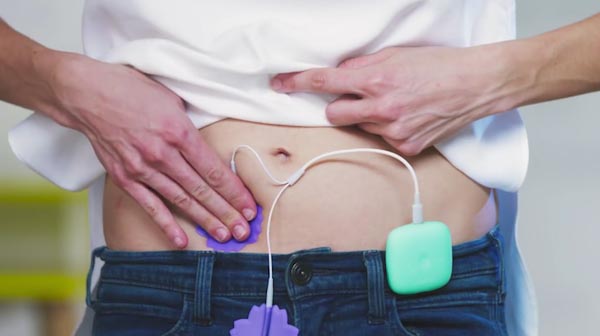
We hear period pains can be, well, quite the pain. The girls we’ve spoken to about it talk about loading up on painkillers, of varying toxicity, and ingesting them with questionable regularity. Well, this particular IndieGogo project promises to give them a solution that does away with any chemicals, instead opting for electric pulses to soothe the pain. Soothe might be the wrong word, since Livia claims to be able to simply block the pain signals from reaching your brain by “closing the pain gates”.
Livia’s technology is based on the “Gate Control Theory”. Livia is transmitting a pulse that is keeping the nerves “busy”. Busy nerves means that the nerve-gate is closed, therefore pain signals cannot pass through and are unfelt.
Does this hold any scientific weight? Does it make sense? We don’t know, we’re not neurologists, but we’d love to hear from any in our readership. Livia works by sticking two electrodes on your belly and activating it. Wear it as long as you need, and the pain is gone, they say. And you don’t build up a tolerance, with no side effects. Sounds too good to be true, but at an $85 to find out, we’re hoping someone will eventually fill us in on its efficacy.

[ Project Pain ] VIA [ NoPuedoCreer ]









